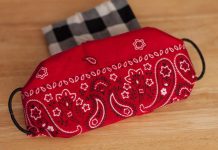
How healthy are the foods you eat? Do you rely on food manufacturers to tell you? Brace yourself. Food manufacturers notoriously use tricks, bells and whistles to make you think their foods are the healthiest option when they may not be. It is up to you, as a consumer, to navigate through the misleading language and packaging to find truly healthy options for your family.
Quick Read:
Food manufacturers try to fool you into thinking their foods are the healthiest. How? They package foods to appear healthier, play with words, hide sugar and use popular buzzwords to convince you that you’re making the right choice for your health and the health of your family. But are you? To truly choose healthy options for your family, you must learn all the tricks manufactures use. The most common tricks manufacturers use are listed below.
Are You Falling for Manufacturers’ Tricks?
Healthy-Looking Packaging
Cornell researchers have found consumers are more likely to perceive an item is more nutritious if it has healthy-looking packaging. For example, study participants felt that a candy bar in a green label was healthier than one in a red label despite the fact that they were nutritionally similar.
Do not be fooled by green, yellow, brown or otherwise earthy-looking packaging. They may appear healthier than other options, but they may not be. Instead, rely on information gleaned from the nutrition label to make your decision.
Playing with Words
Multigrain, no sugar added, all natural, fat free, made with real fruit and zero trans fat are all terms that sound healthy. However, they may merely be hype words that manufacturers use to get you to buy their products. Here’s what they really mean:
- Multigrain – The term multigrain simply means that a product was made with multiple types of grain, which may or may not be healthy. The most healthy options are made from 100 percent whole grains.
- No Sugar Added – No sugar added means that no extra sugar was added during the manufacturing process. However, some foods contain sugar naturally, and manufacturers may have used other sweeteners.
- All Natural – All natural doesn’t necessarily mean something is good for you. Some natural food components, such as high-fructose corn syrup, are considered to be unhealthy.
- Fat Free – Foods labeled as fat free may be loaded with sugar and calories.
- Made with Real Fruit – While products with this label must contain real fruit, they may contain only a very small amount. You should not believe that a product is made from 100 percent fruit from this designation.
- Zero Trans Fat – Products labeled as having zero trans fat are allowed to have up to 0.5 grams per serving.
As you can see, manufacturers use some deceiving terms to describe their products. Always refer to the nutrition label to determine if a product is truly healthy.
Hiding Sugar
According to the University of California San Francisco, manufacturers hide sugar in 74 percent of the packaged foods you consume. They do so by using terms other than sugar on food labels, such as high-fructose corn syrup, barley malt, dextrose, maltose and rice syrup. You may find up to 60 different names for sugar on different packages.
Use of Buzzwords
In recent years, manufacturers have started using popular buzzwords, such as organic and free-range, to market their products. These terms refer to how foods are grown or processed, not how healthy they are. For example, organic foods may still contain unhealthy amounts of fat, sugar and calories.
It can be tricky to find truly healthy foods for your family. However, if you rely on the information listed on nutrition labels rather than flashy packaging or buzzwords, you will be able to make healthier choices in the future.
Copyright 2019, AscendHealthy.com













